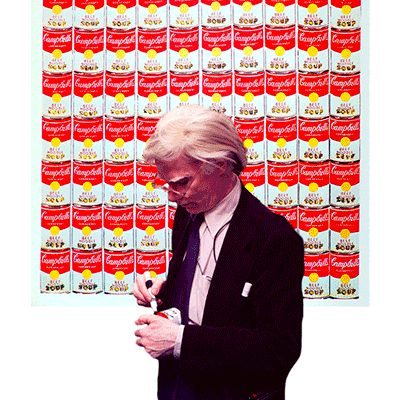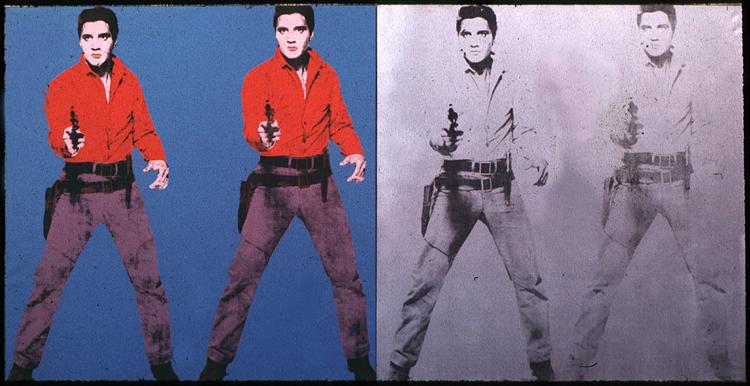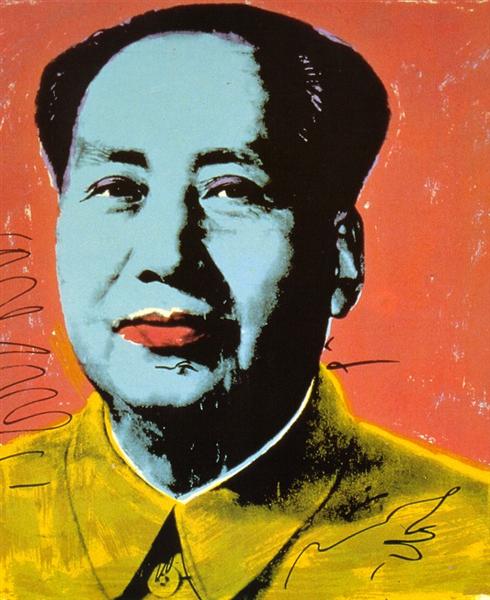Who Was Andy Warhol’s Niche?
Episode #4 of the course How do artists find their niche? by Ann Rea
Andy Warhol was a first-generation American artist born Andrew Warhola. He was a leading figure in the visual art movement known as Pop Art.
We’ll determine Warhol’s niche by answering the following four questions:
1. Why = Who is the artist, what did he stand for, what did he stand against, and why?
Andy Warhol was the son of poor working-class parents who immigrated to Pittsburgh, Pennsylvania from what is known today as northeastern Slovakia.
As a child, Warhol was a social outcast, suffering from St. Vitus’ Dance, a disease of the nervous system that causes involuntary movements and skin blotches.
While bedridden as a child, he drew, listened to the radio, collected pictures of movie stars, and pored over advertisements for American products that his immigrant working-class parents couldn’t afford.
As a first-generation American, Warhol had a unique perspective on the American culture of consumerism and our glorification of modern celebrities.

Andy Warhol with Soup can painting
He studied illustration at Carnegie Mellon University, and he began a career in magazine advertising, where he applied his commercial graphic design and illustrations skills. Later, he used these skills to create fine art.
2. What = Based on his why, what was the one problem that he believed was worth solving?
Consumerism shapes American culture. The powerful forces of advertising and public relations fuel demand for consumer products. Graphic design and illustration create the superficial illusion that our desires for popularity and the good life are achievable through consumerism.
Our desire is rooted in a deep need for social acceptance and admiration—to see and be seen, which Warhol yearned for as a child.
3. How = How did he solve this problem using his artistic and other skills and resources?
He was skilled in advertising, film, and public relations. Warhol established Interview magazine, celebrating the consumption of celebrity and luxury products and solidifying his business network. The magazine is still in print today.
Warhol was a master of public relations. He created “Happenings” at his art studio, The Factory (a well-known gathering place), and at the famous disco Studio 54.
He brought together and filmed distinguished intellectuals, drag queens, playwrights, Bohemians, Hollywood celebrities, and wealthy patrons who desired to see and be seen.

Elvis I & II by Andy Warhol

Marilyn Monroe by Andy Warhol

Mao by Andy Warhol
He created art simply around what he liked—brand names, celebrities, dollar signs, and Campbell’s soup, which he claimed to have had for lunch for most of his life.
Warhol often refused to explain his art, saying, “It’s already there on the surface.”
4. Who = Who had the one problem that he believed was worth solving?
Who else wanted to see and be seen?
His wealthy celebrity patrons, including the shah of Iran, Mohammad Reza Pahlavi, and his wife Empress Farah Pahlavi, Mick Jagger, Liza Minnelli, John Lennon, Diana Ross, and Brigitte Bardot.
Share with friends

